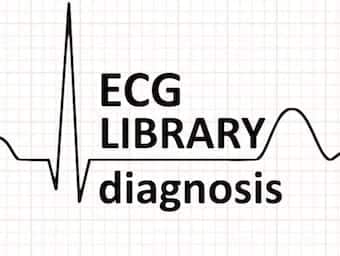
Supraventricular Tachycardia (SVT)
A review of the different types of supraventricular tachycardia (SVT), with a focus on AV-nodal re-entry tachycardia (AVNRT)

A review of the different types of supraventricular tachycardia (SVT), with a focus on AV-nodal re-entry tachycardia (AVNRT)

ECG features of Idiopathic Fascicular Ventricular Tachycardia. AKA Belhassen-type VT, verapamil-sensitive VT or infrafascicular tachycardia.

Massive pericardial effusion produces a characteristic ECG triad of low QRS voltage, tachycardia, and electrical alternans. LITFL ECG Library

A review of the ECG characteristics of "fixed ratio blocks", i.e. second degree AV block with 2:1 or 3:1 conduction ratios.

Second degree heart block (2nd degree AV block) with a P:QRS ratio of 3:1 or higher, producing an extremely slow ventricular rate.

A review of the ECG features of Mobitz II 2nd degree AV block - Originally termed Hay block (1906) by Mobitz in 1924. ECG Library LITFL

A review of the basic ECG features, causes and pathophysiology of Mobitz I AV Block (Wenckebach Phenomenon) with some example ECGs.

Atrial tachycardia is a form of supraventricular tachycardia, originating within the atria but outside of the sinus node

Review of the atrial ectopics and premature atrial contractions (PACs) with ectopic pacemaking tissue within the atria

A review of the ECG features of arrhythmogenic right ventricular cardiomyopathy (ARVC) AKA: arrhythmogenic right ventricular dysplasia (ARVD)

Anterior STEMI usually results from occlusion of the left anterior descending (LAD) artery and carries the poorest prognosis of all infarct territories

AJR occurs when the rate of an AV junctional pacemaker exceeds that of the sinus node. Seen in digoxin toxicity and myocarditis